The fires at blast furnaces at the old Indiana Harbor West steel mill in East Chicago have burned for more than a century.
But they won't forge iron for much longer.
Chicago-area industrialist Clayton Mark, one of the early pioneers of the American steel industry, partnered with his father to found the well point, small casting and steel pipe company known as Mark Manufacturing Co. in 1888. Its products were used in furniture, cars, bicycles, drinking water wells, hydrants, home electrical systems and oil wells stretching from Texas to the Middle East.
The company thrived to the point at which Mark started building a steel mill along the Lake Michigan lakefront in the fledgling industrial city of East Chicago in 1916 to supply his own company's growing steel needs.
Mark helped develop East Chicago during its early period of rapid growth, bringing in acclaimed architect Howard Van Doren Shaw, whose American Craftsman buildings can be found in Chicago's Loop and on Lake Shore Drive, to design the English village-inspired worker community Marktown. The dormitory-like neighborhood, a short walk from the Mark Company mill, was modeled after Chicago's Pullman neighborhood and is now listed on the National Register of Historic Places.
People are also reading…
In 1918, Mark built the first blast furnace at Indiana Harbor West, which also operated ore docks, a strip mill, a steel shop, pipe mills, butt-weld mills, a seamless tube mill, coke batteries, galvanizing lines and electrolytic tinning lines, among other facilities. Constructed on infilled land jutting out into the lake on the west side of the Indiana Harbor Ship Canal, it became one of the world's largest steel mills.
It cost an estimated $18 million to build, or about $464 million in today's dollars after adjusting for inflation. Stretching along a mile of lakeshore, it initially could make up to 450,000 tons of steel a year.
The mill would go on to make steel for countless cars, appliances, pipes and military vehicles over the course of the 20th century and early 21st century. Its four blast furnaces forged the molten iron used to make steel, blazing through countless shipments of iron ore and other raw materials through several changes of ownership.
But then iron-making ended the way Ernest Hemingway famously described the process of going bankrupt: "gradually, then suddenly."
After years of decline in the U.S. steel industry, ArcelorMittal USA indefinitely idled Blast Furnace No. 3 at the former LTV steel mill in East Chicago in 2019 instead of undertaking the massive capital expense of relining it, declaring that "it reached the end of its current campaign."
Cleveland-Cliffs bought most of ArcelorMittal's U.S. steel mills in December 2020 and recently decided it will indefinitely idle Blast Furnace No. 4, the last one left on the west side.
The mill on Indiana Harbor's west side had four blast furnaces, Marktown Historic District President Paul Myers said.
"My grandfather used to say before the EPA came out that as long as you see pollution from the mills, there are jobs," he said. "It's cleaner now, but the need for steel has depreciated. There's aluminum in trucks. The steel in cars doesn't rust as much. People don't buy as much food in tin cans. There are a lot of reasons."
The former LTV mill in East Chicago was merged with the former Inland mill on the east side of Indiana Harbor under the ownership of ArcelorMittal. Cleveland-Cliffs continues to operate the two twin steel mills that were historically distinct as one huge steelmaking complex, now known as Cleveland-Cliffs Indiana Harbor Works.
The former Inland mill on the east side had nine different blast furnaces over the years. Indiana Harbor Works will have gone from a cumulative 13 blast furnaces to just one: Blast Furnace No. 7, said Robert Meyer, president of the Northwest Indiana Steel Heritage Project.
"It's the end of iron-making on the west side," he said. "But the west side will still receive hot metal from the east side. They still have steel shops. They'll still make steel."
Cleveland-Cliffs said Blast Furnace No. 7 will be able to produce the extra 2.1 million tons a year in capacity than No. 4 Blast Furnace put out.
"Cleveland-Cliffs has mastered getting more output from its blast furnaces with the hot-briquetted iron they're making in Toledo," Meyer said. "They mastered this process at the former AK Steel mill in Middletown, Ohio. I don't think they'll lose any tonnage because they'll be able to increase the capacity of No. 7. They'll make just as much steel as before."
It's a new chapter for the century-old steel mill, which long supplied its own iron for steelmaking.
Mark Manufacturing Co. ended up merging with Schlesinger Brothers to become the Steel and Tube Company of America, which was billed by the papers as a "$100 million company" and "new rival to U.S. Steel." But it was bought out after just a few years by the Youngstown Sheet and Tube Company of Youngstown, Ohio, in 1923. By the end of the decade, it employed 4,600 workers and made about $400 million worth of steel products per year in the Chicago area, according to the Encyclopedia of Chicago.
"During World War I, the mill made a lot of armored plates for the war effort," Myers said. "Two weeks later the government said, 'never mind.' That left him with a bunch of plate he couldn't sell and was how the mill came to be sold. That's why defense contracts were later changed so the government would have to honor its order."
The East Chicago mill was purchased by Jones and Laughlin Steel, which in turn was swallowed up the Dallas-and-later-Cleveland-based conglomerate LTV near the end of the 1970s, when the American steel industry was reeling from cheap imports, a severe slump and many mill closings nationwide. LTV's mills in East Chicago and south Chicago went on to lay off thousands of workers in the next few decades when it was mired in bankruptcy.
"Lots of places laid off workers and went bankrupt then," said Meyer, whose family worked in the LTV mill for three generations before he went on to work at the Burns Harbor steel mill.
LTV started out as the second-largest steelmaker in the country but ended up cutting capacity from 24 million tons a year to just 10 million tons, closing most of its mills save for Cleveland Works and Indiana Harbor Works in East Chicago.
The company returned to profitability in the 1990s but was again beset by a flood of cheap imports. It was saddled with debt from buying steel tube makers and ended up in bankruptcy court again in 2000. It shut down its mills in December 2001 but sold the facilities in East Chicago and Cleveland to the International Steel Group a few months later.
The Mittal Steel Co. took over around 2005 when it consolidated much of the U.S. steel industry, becoming ArcelorMittal after merging with Luxembourg-based Arcelor the following year to form what was long the world's largest steelmaker by volume. It idled the blast furnaces on the west side while starting up Blast Furnaces A and B at the former Inland mill on the east side.
"They had been government-owned," Meyer said. "They were built to serve the war effort."
But ArcelorMittal reversed course and ended up idling those blast furnaces in the late 2000s, bringing back Blast Furnaces No. 3 and No. 4 on the west side. It demolished and scrapped the indefinitely idled Blast Furnaces A and B not long before selling most of its assets to Ohio-based Cleveland-Cliffs.
"There's only one blast furnace left, but thank God it's the biggest in the Western hemisphere," Meyer said. "The big question is what they will do when they need to reline Blast Furnace No. 7."
A reline would put the blast furnace offline for months. Cleveland-Cliffs still would need to supply iron to the steel shops at Indiana Harbor and Riverdale, so it's possible the Blast Furnaces No. 3 and No. 4 on the west side could be briefly fired back up then, Meyer said.
Cleveland-Cliffs CEO Lourenco Goncalves said the steelmaker had no plans to immediately tear down the blast furnaces on the west side.
"You need a lot of permits," he said. "There's no reason to do that."
The steelmaker is cutting capacity at a time when steel prices have been falling, declining from a record high of $2,000 a ton to about $1,300 a ton. But once capacity is taken offline indefinitely, it doesn't always come back.
East Chicago Tin, across the street from Indiana Harbor West, has stayed down since U.S. Steel indefinitely idled it in 2019.
Even if the remaining blast furnaces at Indiana Harbor West are not torn down, the future might not bode well for integrated steelmaking in which raw materials are fused into metal in the volcano-like heat of blast furnaces. The industry long has been shifting to less costly mini-mills and now faces added pressure to do so as it seeks to curb its carbon emissions.
The blast furnaces that burn coke, a purified form of coal at 2,000 degrees celsius, are among the industry's biggest sources of carbon emissions.
"There is a trend," Meyer said. "No. 7 is the last blast left at Indiana Harbor Works. No new blast furnaces have been built since the early 1980s. They haven't done anything other than rebuild the ones they have. They haven't built any new ones."
The potential end of iron-making at Indiana Harbor West marks the end of an era, Myers said.
"There's a lot of history here," he said.
NWI Business Ins and Outs: Arcade bar, McDonald's, bridal boutique and photography studio opening, Butler Winery and Roxxy's close
Open

Bennett's Pub and Play is now offering a full arcade bar experience with vintage games in Lowell.
The arcade at 420 E. Commercial Ave. opened its long-awaited bar in December.
It had previously operated an arcade with classic games like NBA Jam, Big Buck Hunter and The Fast and the Furious: Drift. People pay $20 for admission to the arcade and can play as many games as they'd like for as long as they'd like. It's only $10 for adults with two or more paid children's admissions and free for kids under 4 years old.
Vintage games

Bennett's Pub and Play offers many different types of arcade games, including Dance Dance Revolution-like platform dancing games and racing games that let players speed around in race cars, big rigs and the Batmobile.
Admission to the arcade is also $10 after 9 p.m., when the bar becomes restricted to adults-only. It serves a variety of adult beverages but does not yet have food.
For more information, call 219-690-3027 or find the business on Facebook.
Closed
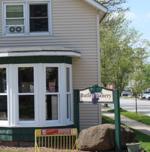
Butler Winery & Vineyards, the Bloomington-based winery, has closed its Chesterton tasting room.
The family-owned winery, started by a former winemaker at Bloomington's massive Oliver Winery who went on to secure federal recognition for south-central Indiana as a wine-making region, makes a variety of dry, semi-sweet, sweet, fruit and specialty wines, including a Sparkling Vidal Blanc and estate-grown Late Harvest Vignoles.
It has two tasting rooms in Bloomington but opted to permanently close its tasting room in a house at 401 Broadway in downtown Chesterton last month.
"We are thankful for the opportunity to be part of such a wonderful community," the winery posted on Facebook.
The Chesterton outpost opened in 2008 after the Butler Winery had success with a booth at the European Farmers' Market. A "second home" for the winery, it offered flights of vino for sampling as well as carry-out bottles.
Duneland oenophiles shouldn't despair. Running Vines Winery still has a tasting room in downtown Chesterton.
Renovated
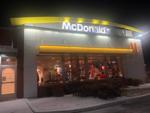
The McDonald's in St John has undergone a massive overhaul both inside and out.
Owners/Operators Jose and Tina Gutierrez did a major renovation of the restaurant at 9769 Wicker Ave., near Target and Strack & Van Til. They celebrated a grand reopening Thursday with many community leaders.
"I'm glad to have a McDonald's franchisee in the town who's willing to invest in his business, as well as in our schools and community," Town Council President Gerald Swet said. "As we're trying to develop a commercial corridor, he's investing in us as well as providing service and employment opportunities in a place that has visual recognition. It's a brand that's recognizable where people know what to expect from the organization. And it has the greatest fries in the world."
Chamber of Commerce Vice President Samantha Alberico said it was good to see a business invest in the community.
"The devotion of resources speaks volumes," she said. "It's an anchor in the St. John community. We look forward to all you do."
Grand reopening
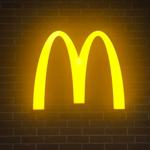
Lake Central Superintendent Larry Veracco said the St. John McDonald's has been a longtime supporter of the school, including its sports teams.
"Thank you Jose for making an investment in the restaurant so it's nice that it's ever been," he said. "When a business owner dresses up their place it benefits all of us and makes our town and school district better. It also helps keep kids busy and out of trouble. It turns them into better people who might someday own their own McDonald's."
Gutierrez, a southern California native who said the Region weather "was a small price to pay for being around so many wonderful people," said he took pride in providing many people with their first jobs.
"McDonald's is America's best first job," he said. "Some of you here have worked at McDonald's. It provides more first-time opportunities than any other organization. Our motto is we help people get to the next level."
Relocating

Envision Health is relocating to 1501 S. Court St. in Crown Point.
"I opened it in January of 2020," Dr. Cathleen Mok said. "My practice offers affordable, accessible primary care for an affordable monthly membership fee. I also offer acupuncture, which is a service open to members of the practice and anyone else interested. I am a board-certified family physician and have been practicing in Crown Point for 15 years."
For more information, visit envisiondirectprimarycare.com, call 219-225-6450, or emaildrmok@envisiondirectprimarycare.com.
Closed
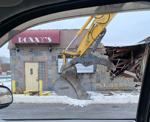
Roxxy's in Gary's Miller neighborhood closed to make room for the South Shore Line expansion but the owners hope to reopen the bar somewhere else in the future.
The popular bar and nightclub at 5705 E. Dunes Hwy. served beer, margaritas, mixed drinks and chicken wings. DJs often provided live entertainment while crowds danced.
The owners sold the property, which was razed so the commuter rail expansion could come through. They posted online "it's not over" and that they hope to return at a new location sometime this summer.
Expanding

Here Comes The Dress in Chesterton is expanding.
The bridal boutique will open a second location in Granger at 1241 E. University Drive in April. The new 1,700-square-foot store will be located in the City Plaza business center, which it will share with Ruth's Chris Steakhouse, Judee’s Boutique and Salon Rouge.
Opened in Chesterton in 2011, Here Comes the Dress specializes in wedding dresses and bridal accessories.
“It was always my plan to expand and the Mishawaka community was an obvious choice," owner Aubrey Rettig said. "Having lived in South Bend for several years, I know the area well. An upscale bridal boutique with a heart for making brides' dreams come true, is just what customers are seeking here.”
For more information, visit www.herecomesthedress.com.
Coming soon

Amy Paris Photography plans to open a portrait studio soon in Munster.
"My overall goal is to empower women of any age and size to own their power, see their beauty, accept their bodies as is and improve their self-confidence regardless of whether it's reconnecting with the confidence they once had or if they are finding the confidence they've never had," Paris said.
She is currently promoting the portrait studio with a 40 over 40 photo project.
"Beauty is celebrated in our youth, but I want to prove that women are beautiful at any age and size, especially in their 40s, 50s and beyond. So I am currently working on a 40 over 40 campaign where my goal is to photograph 40 women over the age of 40," she said. "The women who participate in the experience will have their hair and makeup professionally styled. Then, they will experience a luxurious photoshoot that makes them feel like a celebrity for the day all while having the best photos they've ever had taken. At the end of the campaign, there will be a champagne gala to honor these amazing women, their beauty, their wisdom, and their life experiences, as well as a magazine to commemorate the entire experience."
For more information, call 219-513-9115 or email AmyParisPhotography@gmail.com.
Back
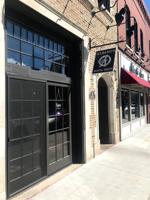
Albano's has returned in Valpo.
The Italian restaurant formerly located in downtown Valparaiso is now selling its "homemade, small-batch, scratch" pastas to take home from The Market at 2405 Morthland Drive in Valparaiso. It's open from 9 a.m. to 2 p.m. on Sundays in the former Strongbow Inn just off of U.S. 30.
It serves up short rib tortellini simmered for eight hours, meatballs made with grass-fed beef and take-and-bake lasagna. It also has a variety of flash-frozen pastas and cheesecake for dessert.
For more information or a menu, find Albano's on Facebook.
If you would like your business to be included in a future column, email joseph.pete@nwi.com.
WATCH NOW: Riding Shotgun with NWI Cops — Patrolling Lowell with Cpl. Aaron Crawford
NWI Business Ins and Outs: Mediterranean restaurant, Bubble tea and poke place, Puerto Rican eatery, chicken and fish joint, men's clothing st…
"come" - Google News
March 06, 2022 at 08:00PM
https://ift.tt/0ZIHA1n
More than century of iron-making to come to end at Indiana Harbor West - The Times of Northwest Indiana
"come" - Google News
https://ift.tt/vYpnL6A
Shoes Man Tutorial
Pos News Update
Meme Update
Korean Entertainment News
Japan News Update
Bagikan Berita Ini














0 Response to "More than century of iron-making to come to end at Indiana Harbor West - The Times of Northwest Indiana"
Post a Comment